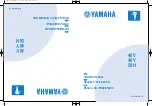
Copyright
©
2012
congatec
AG
TCEDm10
28/94
The conga-TCA provides support for controlling ATX-style power supplies. When not using an ATX power supply then the conga-TCA’s pins
SUS_S3/PS_ON, 5V_SB, and PWRBTN# should be left unconnected.
SUS_S3#/PS_ON#
The SUS_S3#/PS_ON# (pin A15 on the A-B connector) signal is an active-low output that can be used to turn on the main outputs of an ATX-
style power supply. In order to accomplish this the signal must be inverted with an inverter/transistor that is supplied by standby voltage and
is located on the carrier board.
PWRBTN#
When using ATX-style power supplies PWRBTN# (pin B12 on the A-B connector) is used to connect to a momentary-contact, active-low
debounced push-button input while the other terminal on the push-button must be connected to ground. This signal is internally pulled up to
3V_SB using a 10k resistor. When PWRBTN# is asserted it indicates that an operator wants to turn the power on or off. The response to this
signal from the system may vary as a result of modifications made in BIOS settings or by system software.
Power Supply Implementation Guidelines
12 volt input power is the sole operational power source for the conga-TCA. The remaining necessary voltages are internally generated on the
module using onboard voltage regulators. A carrier board designer should be aware of the following important information when designing a
power supply for a conga-TCA application:
•
It has also been noticed that on some occasions, problems occur when using a 12V power supply that produces non monotonic voltage
when powered up. The problem is that some internal circuits on the module (e.g. clock-generator chips) will generate their own reset signals
when the supply voltage exceeds a certain voltage threshold. A voltage dip after passing this threshold may lead to these circuits becoming
confused resulting in a malfunction. It must be mentioned that this problem is quite rare but has been observed in some mobile power supply
applications. The best way to ensure that this problem is not encountered is to observe the power supply rise waveform through the use
of an oscilloscope to determine if the rise is indeed monotonic and does not have any dips. This should be done during the power supply
qualification phase therefore ensuring that the above mentioned problem doesn’t arise in the application. For more information about this
issue visit www.formfactors.org and view page 25 figure 7 of the document “ATX12V Power Supply Design Guide V2.2”.
4.1.15
Power Management
ACPI 3.0 compliant with battery support. Also supports Suspend to RAM (S3).
















































